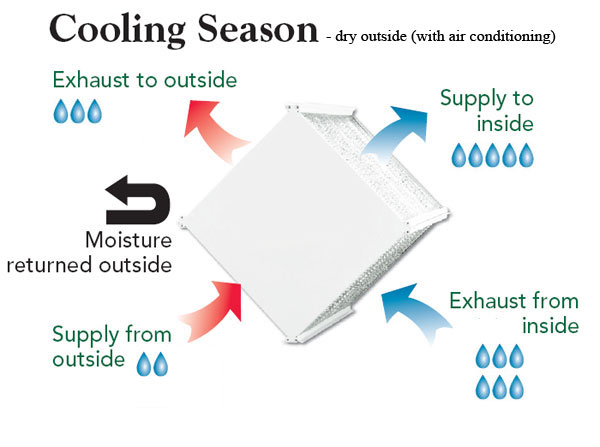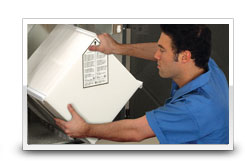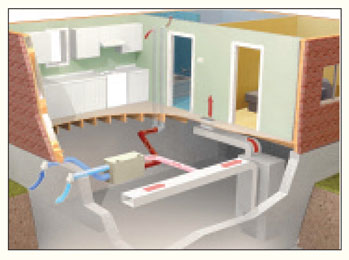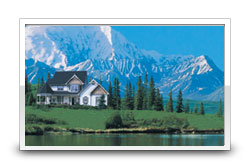How Air Exchangers Work
Do I need an HRV or an ERV?
The answer to this question depends on many factors such as geographic location, tightness of building construction, ventilation rate, size of building, occupancy and activities in the building.
Three basic facts are:
- an HRV or an ERV is not a humidifier in the heating seasons
- an HRV or an ERV is not a dehumidifier in the cooling seasons
- in the summer, houses without air conditioning will not benefit from an ERV
dehumidifying the hot humid outdoor air
vanEE Heat recovery ventilators (HRVs) are ideal for colder climates, like most of Canada, where homes need to be heated the majority of the year.
vanEE HRV heat exchangers (cores) are made of polypropylene and have a lifetime warranty when in residential products. The advantage of polypropylene cores compared to other materials such as aluminum is that it has less weight thus is easier to handle, has a smoother surface that improves heat transfer efficiency and doesn’t collect dirt as fast as other materials. It also has thinner walls so that the heat passing from one airstream to the other has less distance to travel, again improving heat transfer efficiency.
 During the heating seasons, heat is transferred from the warm indoor exhaust air into the cold outdoor supply air. This means you will save on your home heating costs compared to any other form of ventilation. You will experience improved home comfort without unpleasant drafts.
During the heating seasons, heat is transferred from the warm indoor exhaust air into the cold outdoor supply air. This means you will save on your home heating costs compared to any other form of ventilation. You will experience improved home comfort without unpleasant drafts.
Winter HRV ventilating will normally reduce the indoor humidity level. The colder the outdoor air the lower the indoor humidity level will be. To lessen the dehumidification effect, some HRVs can be run on a lower speed or run intermittently.
During cooling seasons in houses with air conditioning, the cool indoor exhaust air takes heat out of the hot outdoor supply air. This means you may save on your home air conditioning costs compared to any other form of ventilation.
vanEE Energy recovery ventilators (ERVs) work in all climates, especially those locations with hot, humid summers, where air conditioning is used for the majority of the year.
vanEE ERV heat exchangers (cores) are made of enthalpic or polymerized paper and have a 5 year warranty when in residential products. The advantage of enthalpic or polymerized paper cores over other ERV systems such as energy recovery wheels is that there are no moving parts to break down or service and no added energy required to drive the wheel motor.

During the heating seasons, heat is transferred from the warm indoor exhaust air into the cold outdoor supply air. This means you will save on your home heating costs compared to any other form of ventilation. You will experience improved home comfort without unpleasant drafts.
The ERV also recovers some of the moisture in the warm exhaust air and transfers it to the cold supply air. The house is dehumidified less due to ventilation with an ERV when compared to an HRV. The moisture recover feature may be valuable in the heating seasons when low indoor humidity levels can cause over-drying of wood materials in a home.
Winter ERV ventilating will normally reduce the indoor humidity level. The colder the outdoor air the lower the indoor humidity level will be. To lessen the dehumidification effect some ERV’s can be run a lower speed or run intermittently.

During cooling seasons in houses with air conditioning, the cool indoor exhaust air takes heat out of the hot outdoor supply air. This means you may save on your house air conditioning costs compared to any other form of ventilation.
Additionally an ERV in the summer uses the dryness of the indoor air conditioned exhaust air to dehumidify the hot humid outdoor supply air. The house is humidified less due to ventilation with an ERV when compared to an HRV.

How Does An Air Exchanger Work: Proper ventilation is key to a healthy and good quality indoor air quality.
Should I Choose an ERV or an HRV? There is alot of confusion between an energy recovery ventilator and a heat recovery ventilator and which one to use. Learn the difference. Why Do I Need to Ventilate My Home? Find out why you need a vanEE Air Exchanger and its importance to your quality of life. Why should I choose a vanEE Air Exchanger? vanEE Is an industry leading manufacturer, learn why you want to choose a vanEE Air Exchanger. Can I Get a Medical Tax Credit? You may be able to get a medical tax credit after having a vanEE Air Exchanger installed.
|

If you are looking for service parts for your vanEE Air Exchanger or technical assistance on a product you bought from us.
 |
Eden Energy Equipment is a leading supplier of vanEE Indoor Air Quality products. We have over 30 years experience improving your home comfort with vanEE products. |
Phone: 1-800-665-3336 Fax: 1-866-329-3336 |








